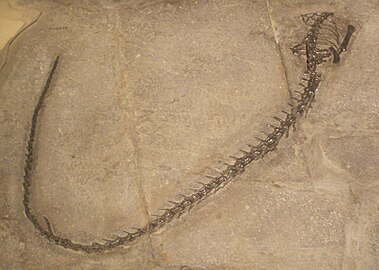| Endennasaurus Temporal range: Late Triassic ~ | |
|---|---|
 | |
| Endennasaurus acutirostris fossil | |
| Scientific classification | |
| Domain: | Eukaryota |
| Kingdom: | Animalia |
| Phylum: | Chordata |
| Class: | Reptilia |
| Order: | † Thalattosauria |
| Family: | † Endennasauridae |
| Genus: | † Endennasaurus Renesto, 1984 |
| Type species | |
| †Endennasaurus acutirostris Renesto, 1984 | |
Endennasaurus is an extinct genus of thalattosaurian from the Upper Triassic of Italy. It was found in and named after the Endenna cave, composed of Zorzino Limestone in Lombardia. [1] [2]


